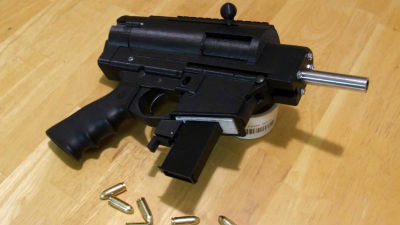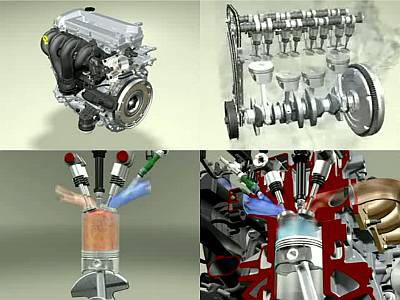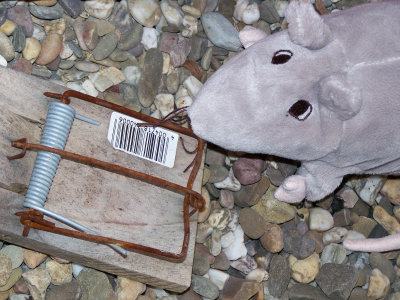The creator of a coil gun arrested for being 'lethal' explains the truth behind the incident

In November 2024, the Tokyo Metropolitan Police Department's Drug and Firearms Control Division
Coilgun Incident - YouTube
According to Asp, the person who posted the video, the media had reported him as 'occupation unknown,' but the correct answer is 'self-employed selling handmade goods.' Asp criticized, 'It seems that the media doesn't recognize selling handmade goods as a profession.'
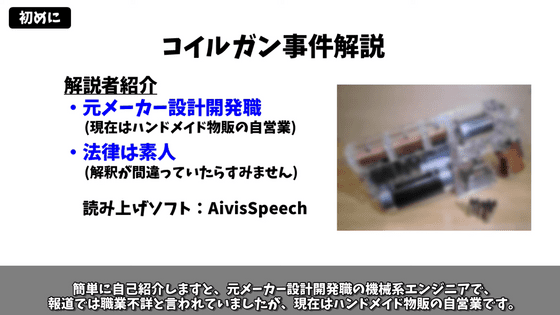
The sequence of events is as follows. In May 2014, Asp posted a video of himself making a coil gun. After that, there was no request from the police to dispose of it or any warning about its structure, but on October 5, 2024, the Metropolitan Police Department conducted a search of Asp's home and confiscated the coil gun. The confiscated coil gun was examined by the National Research Institute of Police Science, and it was found to have lethal power. As a result, the Metropolitan Police Department arrested Asp on suspicion of possessing a handgun. However, on December 9, 2024, Asp was released without charges.
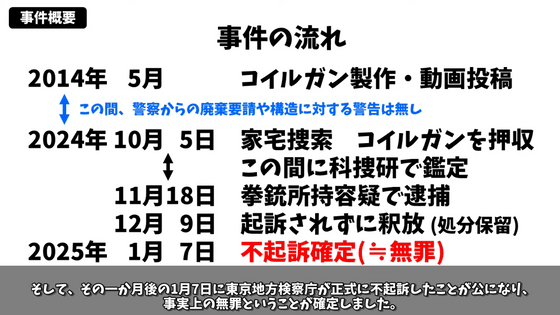
The coil gun that Asp created works by pushing an iron bullet held in a cylinder with a hammer, then accelerating it with the magnetic force of a coil and firing it.
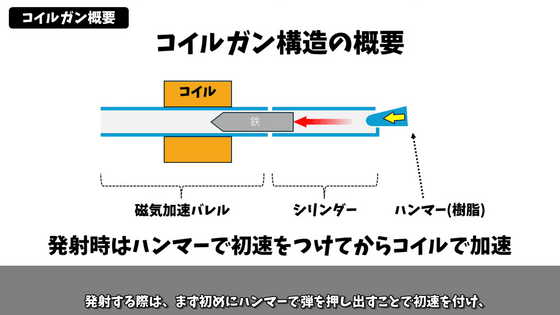
This novel mechanism has a conversion efficiency of about 20% higher than conventional coil guns, but the power of the bullet fired is relatively low at about 4 J (Joules). It is not dangerous at all, as the upper limit of a regulated crossbow is 6 J, and the energy of a baseball traveling at 100 km/h is 56 J.
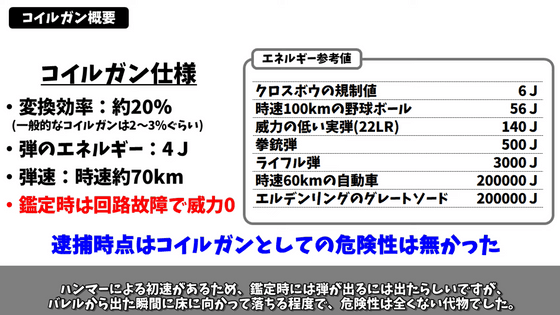
In addition, following the shooting of former Prime Minister Shinzo Abe with a homemade pistol in July 2022 and the murder case involving a half-rifle in May 2023, the Firearms and Swords Control Act (Firearms and Swords Act) has been amended in recent years to strengthen measures to prevent the misuse of guns. The revised Firearms and Swords Act also stipulates rules regarding coil guns, and illegal coil guns are defined as 'guns that have the function of firing metallic bullets by the magnetic force of an electromagnet, and the kinetic energy value of the metallic bullet measured as prescribed by Cabinet Office Ordinance is equal to or exceeds the value specified by Cabinet Office Ordinance as a hazard to human life.' However, Asp points out that the kinetic energy of the coil gun he created is significantly lower than the value specified by the Firearms and Swords Act, and is not subject to regulation.
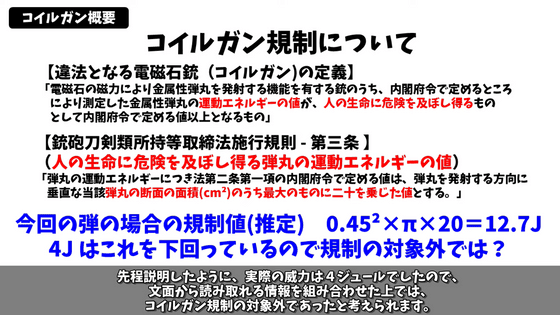
In addition to the low kinetic energy of Asp's coil gun, the revised Firearms and Swords Act is scheduled to come into force in March 2025, but it was not yet in force at the time of the incident in November 2024, and there is a six-month grace period for disposal after the law comes into force, so Asp explained that this incident and the coil gun regulations are essentially unrelated. However, he harshly criticized the media for reporting the incident in a way that could be interpreted as 'an arrest with a lethal coil gun,' saying that 'it did not convey the essence of the incident' and 'it was arbitrary and misleading.'
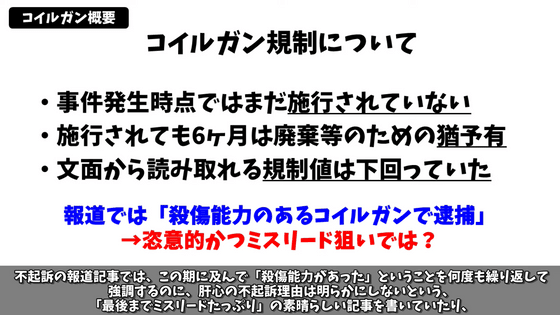
According to Asp, the coil gun he created had various measures in place to prevent it from becoming a real gun, such as using a plastic hammer and low-strength acrylic pipes.
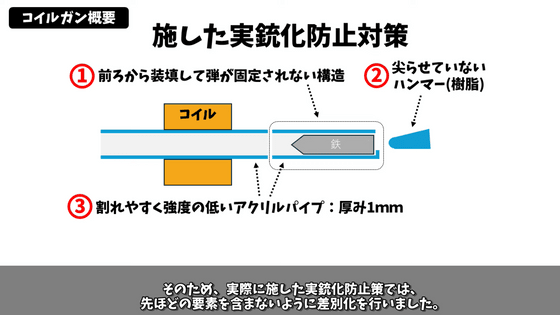
Its impact resistance is less than that of the ABS resin used in general air guns.
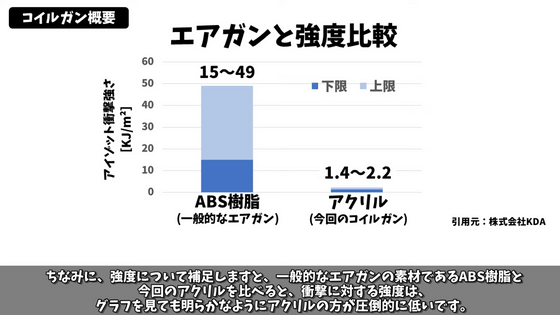
In addition, when he handed them over during a search of his home in 2017, there was no request for their disposal or any criticism from the organization, and they were returned to Mr. Asp. Therefore, Mr. Asp believes that 'the organization was one that the police would have deemed 'legally acceptable.''

However, the National Research Institute of Police Science reported the following findings as a 'post-mortem counter-argument.' They acknowledged that coil guns may be capable of killing if they have a specially shaped tip, ammunition that ignites only on impact, or a cylinder structure that does not require any strength or airtightness.
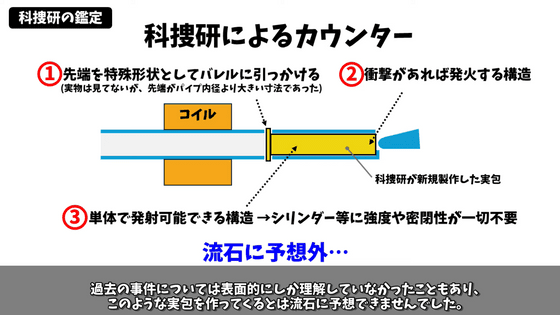
On the other hand, Asp questions the results of the investigation due to the difficulty of creating the cartridges designed by the National Research Institute of Police Science.
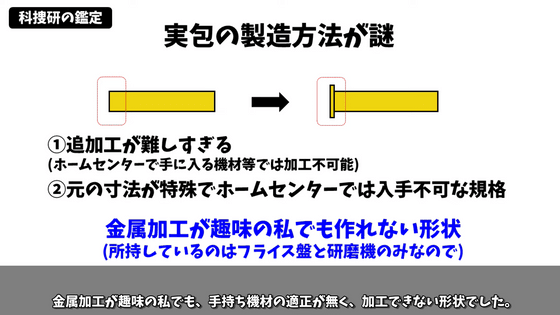
Legally, there is no clear definition of what constitutes a live cartridge, so Asp commented on the results of the National Research Institute of Police Science's analysis, 'In terms of legal interpretation, the shape, material, composition, etc. of live cartridges have not been defined, so they are free to do as they wish.'
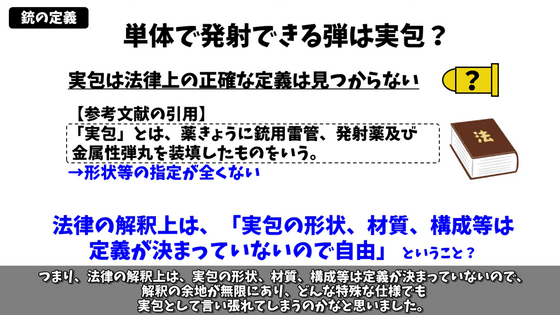
Based on these findings, Asp lists three items that are likely to be identified as structures that are easily arrested: 'pipe-shaped parts,' 'elements that generate impact when struck,' and 'the shape of a handgun or the ability to be handled with one hand.' In particular, pipe-shaped parts and mechanisms that generate impact when struck may be identified in ways that the creator did not intend, making it almost impossible to avoid arrest.
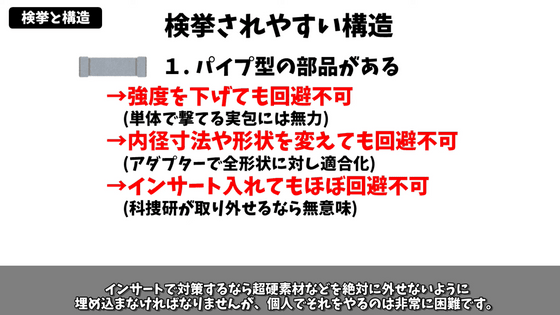
Asp said, 'Even if the person involved in an operation would not be charged in the first place, they may be arrested for some reason,' and 'There are no specific standards or borders for arrest.' He concluded, 'It seems best to refrain from any operation that contains even the slightest element that may appear dangerous.'
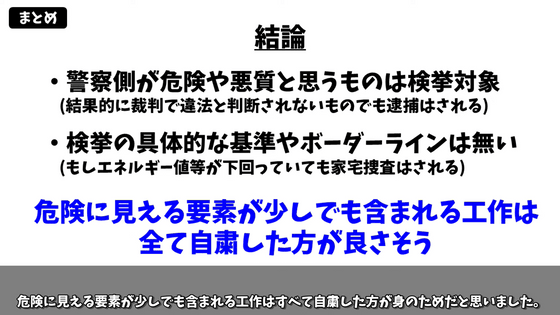
Related Posts:
